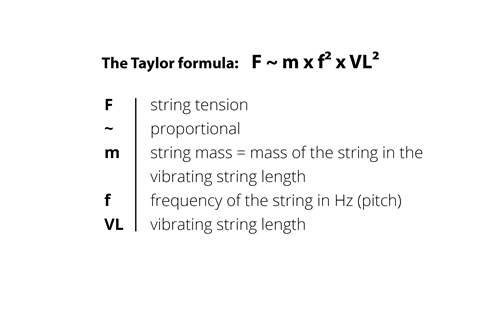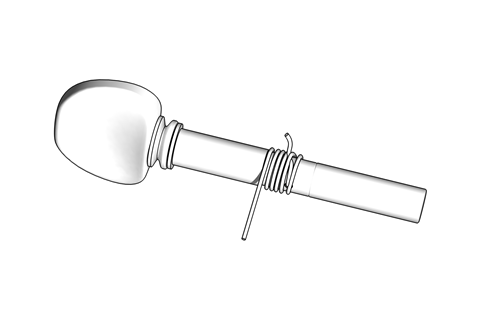In the latest instalment of his monthly blog, Franz Klanner, director of engineering and technology at Thomastik-Infeld, discusses double bass strings
‘The double bass is the most hideous, ungainly and inelegant instrument ever invented,’ rages the protagonist in Patrick Süskind’s one-act play ‘The Double Bass’. Quite clearly, we think otherwise and are dedicating this blog entry to the double bass and all its special features. Because what would an orchestra be without the deep tapestry of sound of the basses?
The double bass is not only the largest and deepest instrument in the violin family, it also has the richest diversity of shapes and sizes in comparison with the violin, viola and cello. The mensur, i.e. the vibrating string length (see the “Vibrating string length” blog entry for more information), of the double bass is far less standardized than that of the violin or the cello:
- In the case of violins, the vibrating string lengths are between 32.5 cm and 32.8 cm on average.
- Cellos essentially have vibrating strings lengths of around 70 cm. Thomastik-Infeld also states that the vibrating string lengths for cello strings is 70 cm.
- For violas, there are no clear standards. The relationship between body length and vibrating string lengths varies. It is possible to have a small body with a longer vibrating string length or a large body with a shorter vibrating string length. However, on average, the mensurs for violas are between 37 cm and 38 cm.
- Similar to violas, the sizes and proportions are very different for double basses. The current standard size is the 3/4 size, which corresponds approximately to a vibrating string length of 103-106 cm. For a 4/4 double bass, a vibrating string length of 106-110 cm is usual, but there are also instruments outside these standards.
The double base is a deep instrument with notes that are tuned in fourths: E1-A1-D-G. In the orchestra, it often plays the cello part transposed an octave lower. However, there are no notes below the E1 note, which is why double basses with low notes extending down to B2 or C1 are often needed in the orchestra. In principle, there are two ways to produce extra-low notes on a double bass:
1) The C-Extension
Many bassists appreciate the greater ease of playing a 4-stringed bass but would still like the range of a 5-stringed bass for their repertoire. The possibility of an extension is very welcome here, as the extension is much cheaper than a second instrument with 5 strings. The so-called C-Extension uses a fingerboard extension on the E-string to make it possible to play notes down to the low C1. However, the extended C1 string requires a higher string tension due to its length. In its Spirocore range, Thomastik-Infeld offers the Extension C1 string S44 with a more normal string tension and the Extension C1 string S44w (soft) with a softer tension.
2) Using a five-stringed double bass:
The tuning of the fifth string to B2 or C1 depends on cultural practices. Tuning to B enables a deep, rich sound, while tuning to C1 is more like the cello’s C1 string tonally and in terms of resonance behaviour – as a result, there is a large third as an interval between the low E1 and C1 strings. With its Belcanto range, Thomastik-Infeld offers the B2 string BC65 as a fifth string, which can easily be tuned a half-tone higher to C1. This produces as more vibrant character as a result.
Thomastik-Infeld offers double bass strings in orchestra tuning and solo tuning. When playing solo on the double bass, the solo tuning of each string is a whole tone higher: ‘F#1-B1-E-A’ in comparison with the orchestra tuning: ‘E1-A1-D-G’.
Is it possible to tune a solo set using orchestra tuning?
Yes, it’s possible. In general, when using solo or orchestra tuning, the eponymous set, e.g. Belcanto Solo or Spirocore Orchestra, is naturally the most ideally tuned and suitable. Solo strings, as the name suggests, are optimized in terms of tone for solo playing. However, it is possible to tighten solo-tuned strings to orchestra tuning without risking damage to the string or instrument. The reason for this is the lower string tension of the orchestra tuning. The lower string tension entails a different reaction for each instrument. Musicians should be aware that an under-tuned solo string has considerably less tension than a “soft” orchestra set.
Generally speaking, the following trend applies when changing the tension:
- Reducing the tension: the string sounds darker, the instrument becomes more brilliant
- Increasing the tension: the string sounds brighter, the instrument becomes darker
- Strings with orchestra tuning have a lower string tension than strings with solo tuning.
ATTENTION: changing string tensions leads to a reaction of the string and instrument. When the string tension is too high, the string and instrument may suffer. Please read our blog entry on ‘String Tension’ for more information on the very important subject of string tensions.
Is it possible to tune an orchestra set using solo tuning?
In principle, we do not recommend changing the tuning of a string that has been developed for use with orchestra tuning. Many musicians believe that the increased string tension can achieve more volume and increased load capacity. However, in most cases, this is incorrect. It does sound louder to the ear, but the string loses its load capacity and can no longer vibrate freely. The string and instrument are also put under more pressure due to the increased string tension. This increases the risk of damaging the string and the instrument in the long term.
Let’s look at an example:
The Thomastik-Infeld Belcanto Orchestra A1string BC63 has a string tension of 29.3 kg and a mensur of 104 cm. If this string is tuned a whole tone higher using solo tuning, then the frequency of 55 Hz of A1 increases by 12.2% to 61.735 Hz of B1. However, the quadratic ratios in the Taylor formula increase the string tension disproportionately by 26% to 36.9kg!

See Taylor formula
To get the best from an instrument, we recommend visiting an experienced double bass-maker instead. They will be able to adjust your instrument perfectly. As well as the string selection, the fingerboard curve, saddle height and string height also play a crucial role.
Can a 3/4 string be strung on a 4/4 bass?
No. The string tension of a 3/4 string (104 cm) strung onto a 4/4 base (110 cm) is increased by +11.8%! It is necessary to pay particular attention to the actual vibrating string length so that neither the string nor the instrument are overloaded.
Can a 4/4 string be strung on a 3/4 bass?
In principle, a music string is always designed for a specific vibrating string length. This is why Thomastik-Infeld provides strings for 3/4 basses and for 4/4 basses which are perfectly suited for the size of the body and vibrating string length. Our strings are thus designed to support the musician, their style of playing and the instrument in equal measure. Ultimately, they aim to create the perfect sound on the instrument and optimize the musician’s expressive possibilities and joy of playing. For this reason, we recommend that you look online at www.thomastik-infeld.com/catalog to find out about our product range or get advice from our new string finder at www.thomastik-infeld.com/stringfinder.
However, it is possible, in principle, to string a 4/4 string on a 3/4 string if the string is not too long. The important thing is to note that using 4/4 strings on a 3/4 double bass will lead to a reduction in string tension of up to -10.6%. Furthermore, the length of the string can lead to the playing zone of the string (metal winding) being wound onto the peg – this should be avoided so that the string is not damaged!

- Read: Stringtelligence by Thomastik-Infeld: dealing with corrosion and perspiration
- Read: Stringtelligence by Thomastik-Infeld: What are violin, viola, cello and bass strings made out of
- Read: Stringtelligence by Thomastik-Infeld: combining different string types, Part 1
- Read: Stringtelligence by Thomastik-Infeld: combining different string types, Part 2
- Read: Stringtelligence by Thomastik-Infeld: wolf tones and string buzzing











































1 Readers' comment